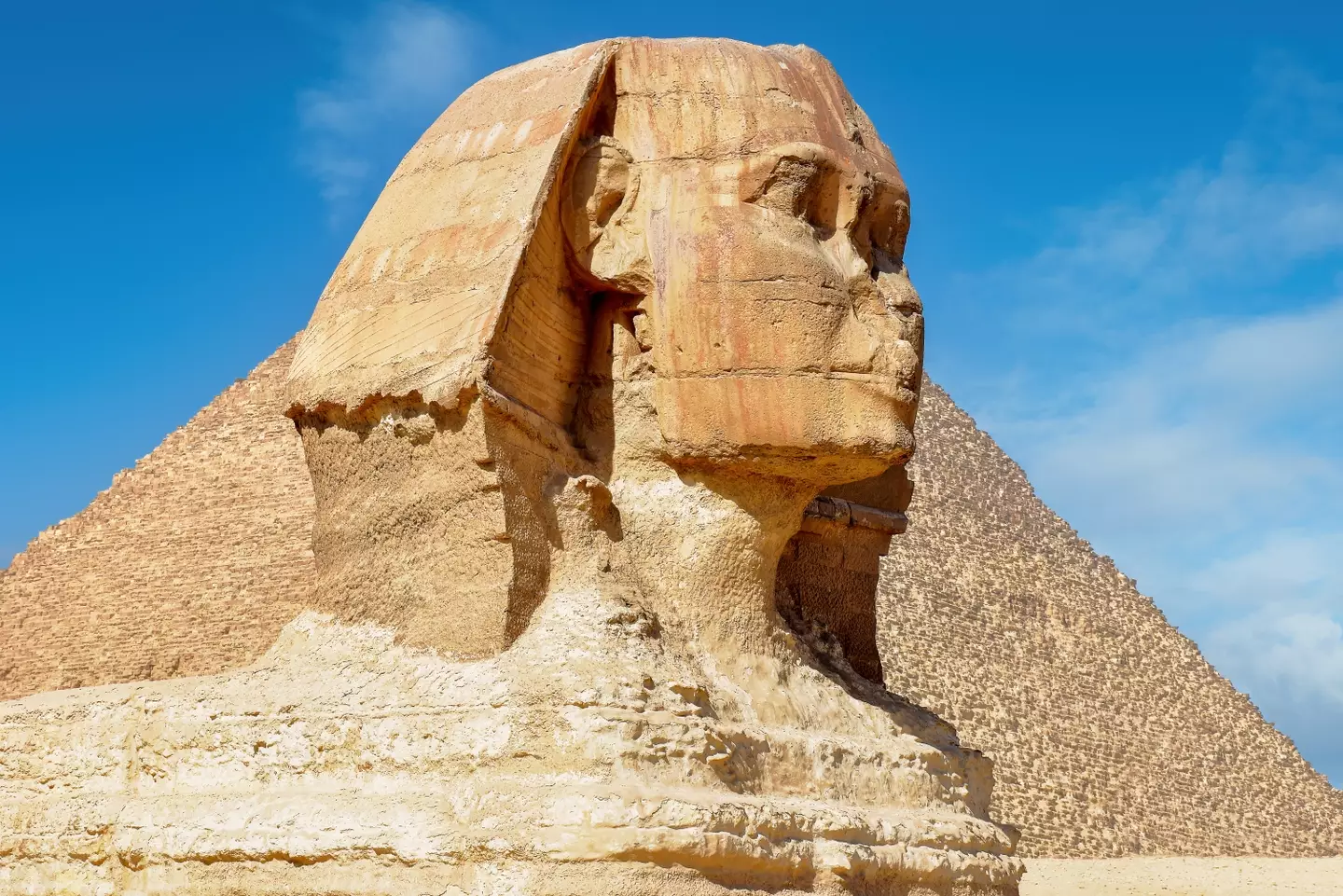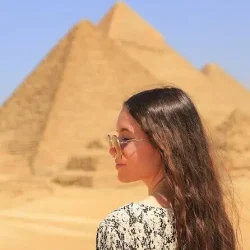Standing proudly on the Giza Plateau, The Sphinx of Giza is one of the most iconic and mysterious monuments in the world. With the body of a lion and the head of a pharaoh, this ancient limestone statue has been guarding the pyramids for over 4,500 years. Whether you’re a history enthusiast, an archaeology lover, or simply fascinated by ancient wonders, visiting the Sphinx is a must-do experience in Egypt!
A Glimpse into the Sphinx’s History

Carved from a single block of limestone, the Great Sphinx is believed to have been built during the reign of Pharaoh Khafre (c. 2500 BC), the same ruler associated with the second-largest pyramid in Giza.
However, many mysteries surround the Sphinx:
- Who built it? Some theories suggest it was older than Khafre’s reign.
- What was its purpose? Scholars believe it was a guardian of the pyramids or a symbol of divine power.
- Where is its nose? The missing nose is often blamed on Napoleon’s soldiers, but drawings from before his time show it was already gone!
The Sphinx remains an unsolved riddle of ancient Egypt, adding to its legendary status.
Must-See Highlights at the Sphinx

1. The Sphinx’s Majestic Features
73 meters (240 feet) long and 20 meters (66 feet) high – one of the largest monolithic statues in the world!
Intricate carvings on its head and body show remnants of original paint.
Mysterious inscriptions and hidden tunnels beneath the monument.
2. The Sphinx Enclosure & Viewing Area
Get close-up views of this incredible monument.
See panoramic shots of the Sphinx with the Pyramids in the background – a photographer’s dream!
3. The Dream Stele – An Ancient Prophecy
Located between the Sphinx’s paws, this granite stele tells the story of Pharaoh Thutmose IV, who dreamed that the Sphinx promised him the throne if he cleared the sand covering its body.
4. The Giza Plateau Experience
A visit to the Sphinx is incomplete without exploring:
- The Great Pyramid of Khufu (the last remaining Wonder of the Ancient World).
- The Pyramid of Khafre, linked to the Sphinx.
- The Valley Temple, an ancient site used for rituals and mummification.
Visitor Information

🕒 Opening Hours:
- Daily: 8:00 AM – 5:00 PM (until 4:00 PM in winter)
💰 Ticket Prices:
- General Entry to the Giza Plateau: ~450 EGP (€13)
- Additional fees for pyramid interiors and guided tours
📍 Location:
- Giza Plateau, near Cairo, Egypt
How to Get There
The Sphinx is located on the Giza Plateau, about 20 kilometers (12 miles) southwest of Cairo. You can reach it by:
- Car or Taxi: A drive from Cairo takes about 30-45 minutes, depending on traffic.
- Tour Bus: Many tour operators offer day trips to the Giza Plateau from Cairo.
- Public Transport: Buses and microbuses run from Cairo to Giza, but hiring a taxi or joining a tour is more convenient.
Tips for Your Visit

- Visit Early in the Morning: The Giza Plateau can get crowded, especially during peak tourist season. Visiting early in the morning is a good way to avoid the biggest crowds.
- Wear Comfortable Shoes: You’ll be doing a lot of walking on uneven surfaces.
- Bring Sunscreen and a Hat: The Egyptian sun can be intense, so protect yourself from the heat.
- Stay Hydrated: Drink plenty of water, especially during the summer months.
- Hire a Guide: A knowledgeable guide can provide valuable insights into the history and significance of the Sphinx and the Pyramids.
- Be Aware of Scams: Be cautious of touts and vendors who may try to overcharge you.
- Combine with Other Attractions: The Sphinx is located on the Giza Plateau, making it easy to combine your visit with the Pyramids and other nearby attractions.
Why Visit the Great Sphinx?
- One of the most mysterious ancient monuments in the world
- An essential stop on any trip to Egypt
- Perfect for history lovers, archaeology fans, and adventure seekers
- Stunning views with the Great Pyramids in the background
- A place full of ancient legends, myths, and mysteries
A trip to Egypt wouldn’t be complete without standing face-to-face with the legendary Great Sphinx!
Visiting Experience

Visiting the Sphinx was a truly awe-inspiring experience. The sheer size and age of the monument were overwhelming. I was fascinated by the mystery surrounding its origins and purpose. It’s a must-see for anyone visiting Egypt and interested in history and culture.
📍 Have you visited the Sphinx? Share your thoughts in the comments!








0 Comment